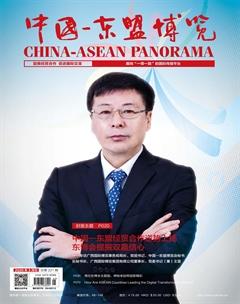Cambodia’s Energy Security Woes
Han Phoumin
Economic growth in Cambodia is constrained by a lack of appropriate policy for electricity access and energy security. Only 50% of Cambodias population had electricity access in 2016. Remarkably, by 2019, the number of households connected to grid electricity grew to almost 80%. The challenge, however, remains for rural areas where certain remote areas have almost no electricity.
Cambodias Power Sector Strategy 1999-2016 focuses on household energy security. Its objectives are to provide an adequate supply of energy throughout Cambodia at reasonable prices and to ensure a reliable and secure electricity supply for the expansion of Cambodias economy. But this Strategy has had limited success. From March to June 2019, there was a huge shortage of 400 megawatts of electricity during the dry season. This was due to weather conditions, which produced a low water level in a hydropower reservoir. Such a large shortage demonstrates the weak capacity of Electricity of Cambodia (EDC) to manage a vulnerable power supply mix.
Cambodias Electricity Law in 2011 has a clear aim of ensuring the protection of the rights of consumers to receive a reliable and adequate supply of electric power at reasonable costs. The Cambodian electricity tariff, however, is the highest among ASEAN members.
Cambodia should have a lower tariff as most of the investment costs in power generation such as coal-fired power plants and hydropower are based on conventional technologies. Countries in the region that have invested in more complex technologies have lower electricity tariffs than Cambodia. It is likely that high prices are a governance issue. Currently, there is public discomfort about the way that EDC manages the supply and price of electricity, especially given frequent blackouts.
Additionally, the security of Cambodias oil supply faces risks. Piracy and armed robbery of oil being shipped from the Middle East has played a role in disrupting the free movement of vessels — causing delays, financial losses and loss of life. Cambodia is also affected by tropical weather, with plentiful rainfall which results in floods almost every year. The significant probability of flooding combined with relatively underdeveloped road systems increases the risk of oil supply disruption, especially when oil is transported by truck.
Oil supply in Cambodia is provided by multinational private companies such as Chevron, Total and PTT and Cambodian suppliers like SOKIMEX and Tela. Government regulation stipulates that these companies are to hold 30 days of operational oil stock at terminals. But these companies only hold operational oil stock of about 15-20 days as the country does not have mechanisms in place to monitor these holdings.
The Cambodian government is attempting to reinforce the oil supply resilience of the country. It has been working on improving transport and road infrastructure to diversify modes of oil transportation. It is also improving disaster forecasting systems and emergency schemes for distributing fuel by various transport modes. The development of an oil refinery by Cambodian Petrochemical Company will be completed by 2021 and a domestic oil production project developed by KrisEnergy Ltd will be completed by 2020. Both will likely increase Cambodian energy security in the near future.
So what measures can the government take to address Cambodias lack of fuel diversification and a low electrification rate?
The government should first consider households with energy supply that is insufficient to meet their basic needs. Technologies such as rooftop solar photovoltaics, solar farms and standalone small generators can provide fast access to electricity for remote areas in the short term. The government should support investment to connect these areas to the electricity grid in the long term.
Second, the stability and pricing of electricity should be considered. Cambodia may need to establish an institution, such as a national emergency strategy organisation, to deal with energy supply disruption in the future. The Cambodian government may also consider oil stockpiling by the state on top of what oil importing companies hold in their inventory oil stock. This will help protect vulnerable industries such as health, food and electronics during emergencies. It would also be a good signal to investors and it could attract more important investment to Cambodia in sectors that require a stable energy supply such as electronics.
Third, the government should consider the gains that could be made from the efficient generation and usage of electricity. Cambodia could see huge energy savings if new power generators are high efficiency and low emissions models. Besides hard infrastructure, energy efficiency and conservation policies are low-hanging fruit that can save significant amounts of energy at the final stage of consumption, be it in the industry, transportation, commercial or residential sectors.
It is possible to rapidly develop and deploy energy efficiency and saving strategies in all sectors by increasing the share of renewable energy such as solar, wind and biomass power generation in the energy mix. Doing so is essential for the inclusive and sustainable development of Cambodias economy.
· Source: East Asia Forum

